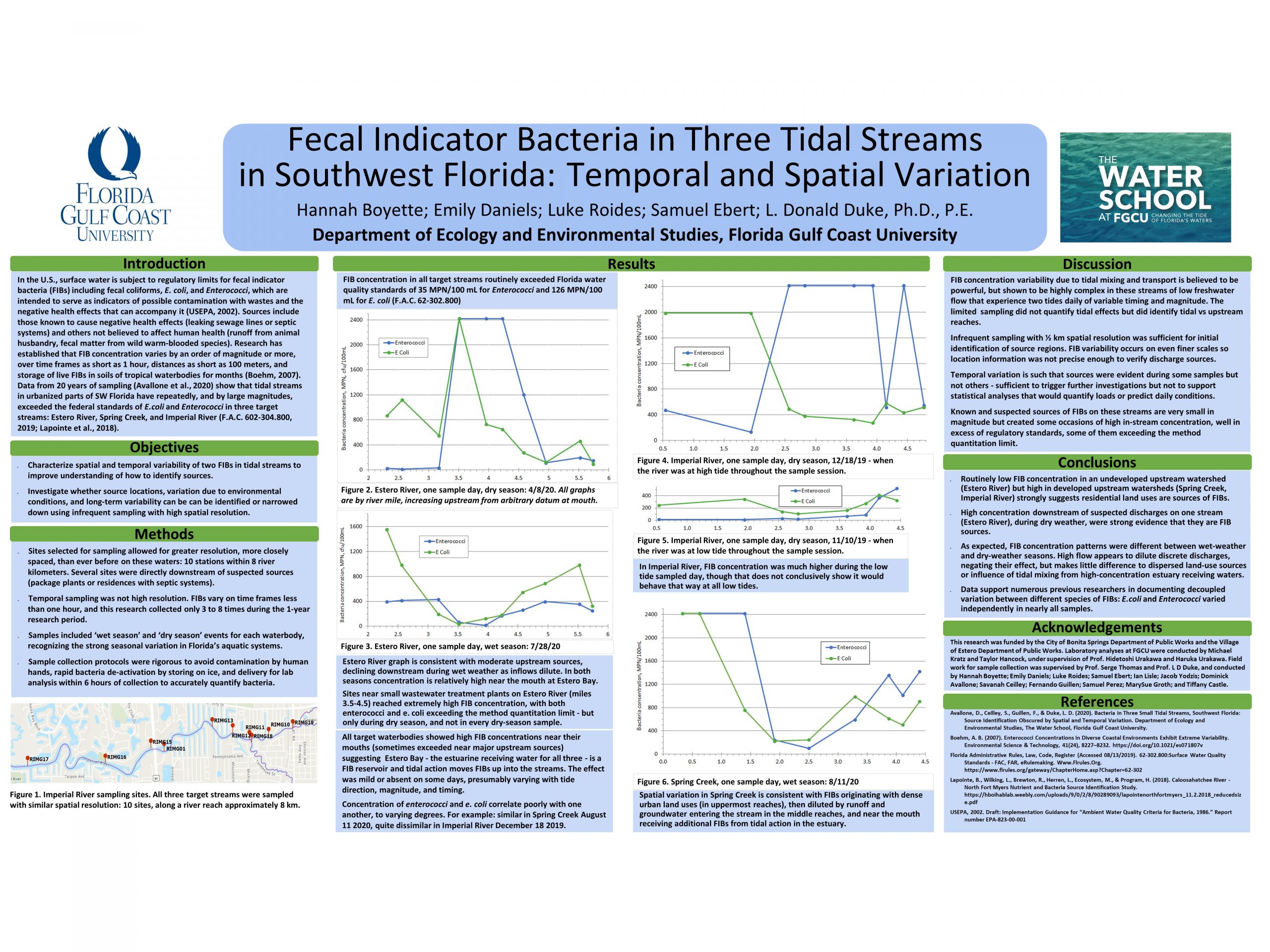Author:
Emily DanielsCo-Authors:
Hannah Boyette, Luke Roides, Samuel Ebert, L. Donald Duke, Ph.D., P.E.Institution:
Florida Gulf Coast UniversityAbstract
In the U.S., surface water is subject to regulatory limits for fecal indicator bacteria (FIBs) including fecal coliforms, e. coli, and Enterococci, which serve as indicators of possible contamination with human wastes and the negative health effects that can accompany it. Data from 20 years of sampling show that, among other waterbodies, tidal streams in urbanized parts of Southwest Florida have repeatedly, and by large magnitudes, exceeded the federal standards for both Enterococci (30 MPN/100mL geometric mean [GM] and 130 MPN/100mL Ten Percent Threshold Value [TPTV]) and e. coli (70 MPN/100mL GM and 410 MPN/100mL TPTV) in three target streams: Estero River, Spring Creek, and Imperial River.
The objective of this study was to characterize the spatial and temporal variations of Enterococci and e. coli in target waterbodies, and with the aim of identifying possible source locations. This research conducted a small number of sample events (3 to 8 times over one year) on a fine spatial resolution (more than one sample per linear kilometer on three 8-km stream reaches. Results were, as expected, not able to identify or compensate for variations – especially varying tides, flows, storm events, and human activities – but showed surprisingly strong ability to document differing pollutant tendencies in different portions of each reach. Upstream reaches of Estero River extending beyond residential development routinely showed very small FIB concentration while upstream reaches of Spring Creek and Imperial River, more densely developed, routinely had very high FIB concentration, documenting that human land use affects FIBs more powerfully than other potential sources (sediments, soils, non-human animals, etc.). Two reaches of Estero River near privately-operated small wastewater treatment plants showed higher concentrations in nearly every sample, documenting those as sources of particular concern. In all three streams FIBs were in high concentration near the mouth, suggesting that resuspension of estuarine sediments and/or inland movement of estuarine waters influence bacteria concentrations, a mechanism for future research to target.
